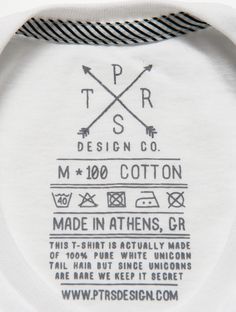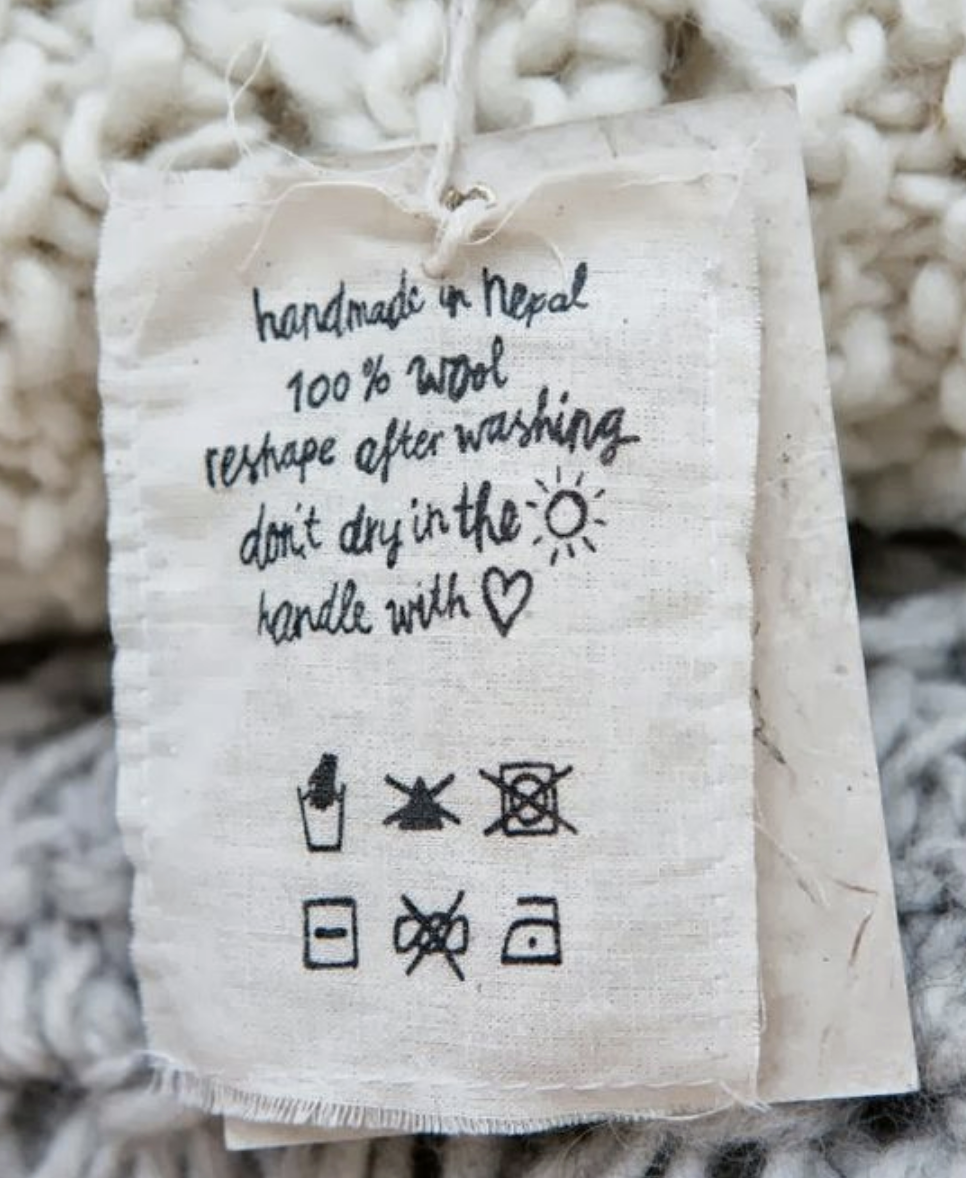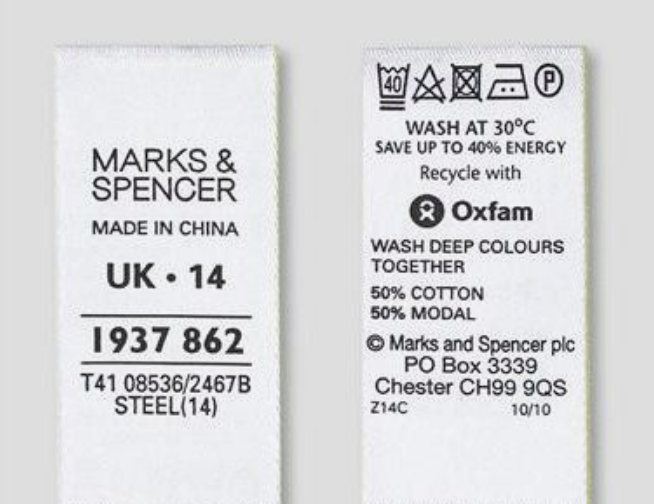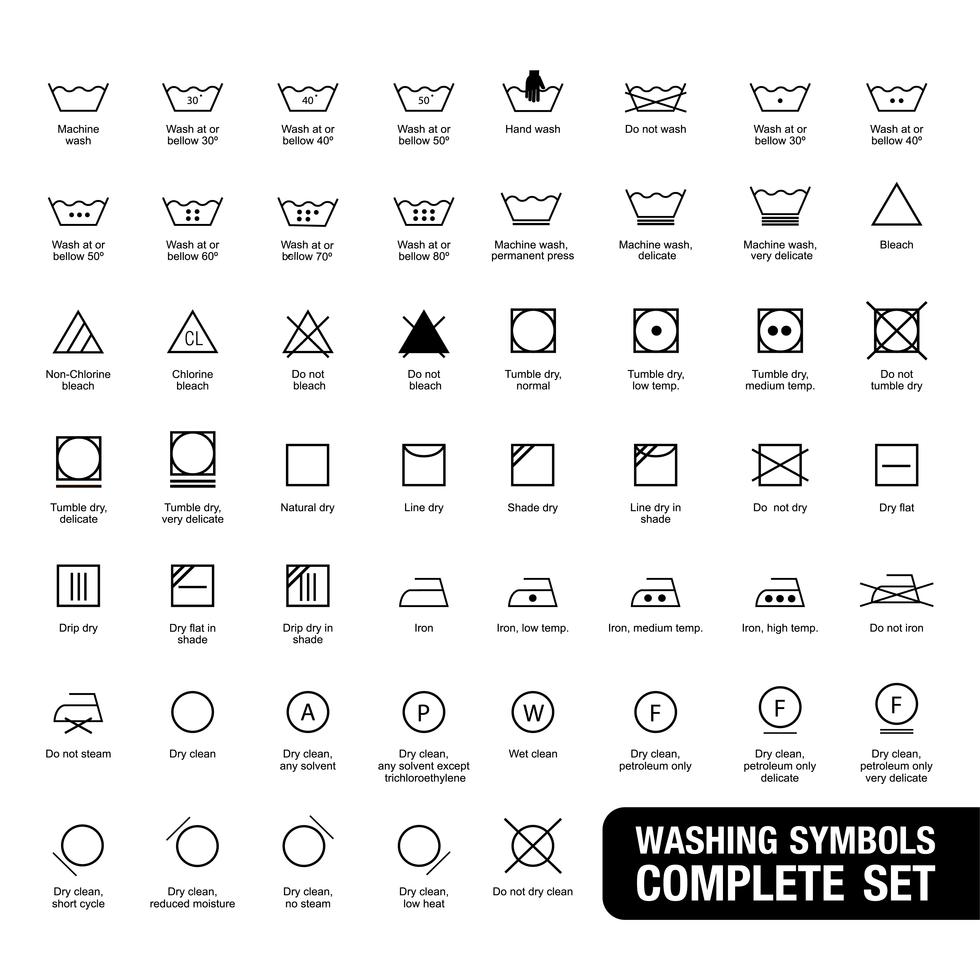Care Labels Have a Big Environmental Impact
Have you ever put a piece of clothing into the washing machine only for it to emerge faded, tangled and damaged?
Care labels are often overlooked by manufacturers, but they’re critical — they can expand the lifetime of your clothing exponentially. Research shows the primary reason for clothing damage is improper care. According to a study by The Care Label Project, we’re throwing out 90% of our clothing too early. The culprit? Poor clothing care.
Care Labels Have a Big Environmental Impact

Care Label
As experts in label making, The Unique Group has crafted thousands of care labels over the years. We’ve found that by improving your clothing’s care label, you can prolong the quality of your clothing, improve brand loyalty and promote sustainability.
Some estimates suggest that by following care labels instructions, people can extend the life cycle of a clothing item by 50-80%. In short, when consumers follow care labels, they are participating in the circular economy and promoting sustainability. Research shows that 25 percent of a clothing item’s carbon footprint comes from the way it’s cared for.
So why aren’t shoppers using care labels?
While about half of shoppers use clothing labels, a third of shoppers say that care labels are confusing, according to a survey conducted by AEG Appliances.
When you think about it… clothing labels haven’t evolved much since the 1950s, and they often aren’t descriptive. Many items just say “dry clean only” or “hand wash only,” and vague descriptions leave a lot of room for error. Everyday care labels that are frequently misunderstood include Dry Clean Only, No Tumble Dry, Hand Wash Only.

Organic Care Label
We suggest that fashion designers take the time to test their care suggestions for garments and then design thoughtful and clear care labels. It’s also important to include specific temperature recommendations for how garments should be handled in the washer and dryer. For example, rather than saying “Wash in hot water,” your care label should say, “Wash in 90-degree water, but make sure the temperature does not exceed 110 degrees.” Similarly, rather than merely describing a sweater as “Hand Wash Only” your care label can explain the ideal temperature and washing machine cycle for washing the garment.
The AEG R&D lab has developed a series of new care labels that can act as inspiration for your care labels.
It’s worth familiarizing yourself with the new modern care symbols, such as “Don’t Overwash” because these symbols give consumers clear guidance. For example, The Don’t Overwash symbol emphasizes the importance of not washing a delicate sweater often—preventing consumers from damaging it.
Care Label Tips for Clothing Brands

Mark & Spencer Care Label
Since many clothing brands fail to do their own laundry testing, care labels are often nondescript. This results in people damaging their clothing or deciding not to purchase a clothing item — poor care instructions drive away sales for both retailers and brands. One in three people avoids purchasing garments labelled ‘Dry Clean Only’ (Source: Consumer Laundry Habits, Ipsos MORI 2016).
It’s time that retailers improve the quality and sustainability of their clothing by crafting smarter care labels.
Smart Care Labels include:
- Details on the composition of the materials used to create the item, i.e., silk, cotton, and polyester, etc.
- Transparent details on where the item was made
- Any relevant certifications that highlight the quality of the item. Consumers try to look for clothing labels with material certification such as GOTS (organic cotton certification), so identify any organic material certifications you have on the care label
- In-depth, clear and modern care instructions
In addition, here are some in-depth clothing care tips to share with your consumers:
- Buy high quality garments (like your brand, of course) as they shed less in the wash
- Wash your clothes only when absolutely needed to save water and prevent damage
- Put your clothes in a filter bag when using the washing machine
The Bottom Line
Labels matter —each label represents many different connections of all the people and places involved in crafting the garment. The care labels also gives insights on the future of the garment —how it should be cared for and how we can make it last. Our labels shouldn’t cut out the information we want – it should tell the product’s unique story.

Washing Symbols Guide
